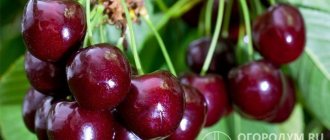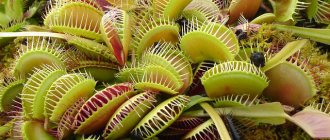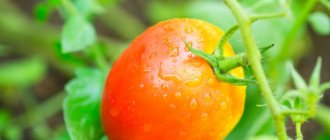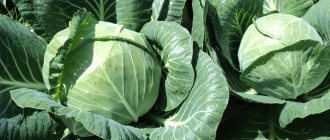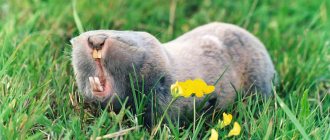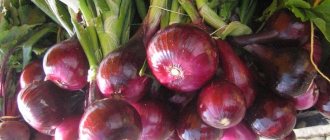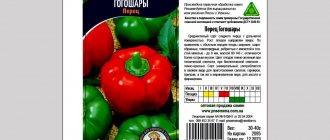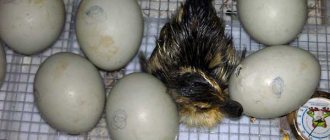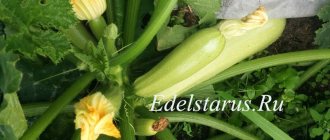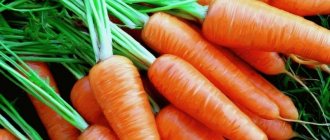Crop varieties
There are many varieties of fodder beets, each of which has its own characteristics and requirements for growing conditions.
The most common of them, Eckendorf yellow fodder beet, has a cylindrical shape, protruding a third from the ground, white juicy pulp. The growth period of the culture is 140-155 days. The variety tolerates low temperatures well, is undemanding to soil, and is an excellent feed for cattle, as it helps increase milk productivity. The Centaur variety belongs to the semi-sugar type, has white, elongated oval fruits weighing 1.2-2.7 kg, with a shallow root furrow. The plant is undemanding to moisture and soil composition. The root crop sticks out from the ground by 40%, which greatly facilitates the assembly process. The growing season of the Centaur variety is 145 days. Hybrid beet varieties Ursus belong to the semi-sugar multi-sprout type. The plant has a yellow-orange cylindrical root, weighing up to 6 kg, more than half sticking out of the ground. Ursus beets are able to grow quickly even in dry and unfertilized soil. The growing season is 145 days. The Record variety is a multi-sprout, semi-sugar plant. It belongs to the middle late cultures. Beetroot has cylindrical-conical pink fruits, weighing up to 6 kg and 40% submerged. The variety is resistant to diseases and preserves well. The growing season of the plant is 145 days. The Kiev pink beet variety is classified as a multi-sprout, mid-season type. The crop has cylindrical-oval fruits of orange color with a small shallow root furrow, half immersed in the soil. Beetroot has a high yield. It tolerates drought well and is resistant to pests and diseases. Buryak Brigadir is distinguished by oval-cylindrical smooth shiny fruits of orange-green color, weighing up to 3 kg, with a high sugar content. The variety is drought-resistant and undemanding to soil composition. The growing season is 120 days. Lada is a single-sprout variety of fodder beet with a white or pinkish-white oval-cylindrical root crop with a pointed base. Its weight can reach 25 kg. Immersion of root crops is 40-50%. The plant is resistant to drought and disease, stores well
The tops remain juicy and green until harvesting, which is important if they are used as raw materials. Buryak Nadezhda has a single-sprouted seed; the hybrid variety is grown in the conditions of the North-Western, Middle Volga and Far Eastern regions
The oval-cylindrical red fruit has a depth of 40%
Characterized by high productivity. The Milana variety belongs to the single-germ, semi-sugar type. Beets grow quickly in the initial stages, have oval-shaped fruits, white below and green above, with a submergence of 60-65%. The plant is characterized by long-term storage, resistance to disease and color. Fodder beet Vermont is a hybrid variety of single-seeded type. The root vegetable is medium-sized, cylindrical-conical, yellow-orange in color. Jamon is a single-seeded variety with a cylindrical-conical root crop that is yellow-orange in color at the bottom and orange at the top. It is characterized by average resistance to cercosporiosis. The root eater is not interested. Starmon has a cone-shaped root, yellow underneath and green on top. The variety prefers loamy, sandy, fertile soils.
Growing technology
Sugar beets are demanding of heat, light and humidity. Does well in moderate sunny climates. Equally poorly tolerated by prolonged heavy rains and drought. The optimal temperature for germination is +20…25°С, for growth and sugar synthesis – +30°С.
Predecessors for beets in crop rotation
Sugar beets are not grown as a monoculture. It is sown after winter wheat and rye, some root crops, such as onions, potatoes, and representatives of the legume family.
If the same field is often sown with sugar beets, pathogens of characteristic diseases and pests accumulate in the soil, primarily the beet nematode. Fodder and table beets, spinach, and cruciferous vegetables (cabbage, radishes, mustard, rapeseed) are also susceptible to it. The break in planting such crops should be from 3 to 7 years.
Preparing the soil for sowing
Sugar beets love well-drained, loamy, soddy-podzolic soils, as well as chernozems and peat bogs. It is especially demanding on soil acidity, the optimal pH is from 6.5 to 7% (slightly acidic, neutral).
Before sowing, the soil is enriched with organic and mineral complexes, it must be plowed and leveled. Root crops need good aeration and drainage, and large clods of soil and weeds can inhibit the development of root crops. A distance of at least 50 cm is left between the furrows so as not to crowd the roots and interfere with irrigation.
Seed preparation
At seed factories, special processing processes are carried out that accelerate the emergence of seedlings and increase the productivity of sowing work:
What is the difference between sugar beet and fodder beet?
Sugar beets, like fodder, are an industrial crop that is also grown for livestock feed, among other things. Being related, root vegetables have a number of significant differences.
Appearance
Visually, a sugar vegetable can be distinguished from a fodder variety by the elongated, spindle-shaped shape of the root vegetable. The sugar root can reach 60 cm in length and no more than 25 cm in diameter. Its weight does not exceed 2.5 kg.
Other external differences:
- the skin of sugar beets is yellowish or grayish;
- the surface of the root crop is not smooth, like that of fodder beet; it is covered with tubercles.
The foliage of both crops has a similar shape and color.
Composition and sweetness
Sugar plant varieties were bred artificially (as an alternative to sugar cane), specifically for the production of sugar. Its content in root crops reaches 20%. For comparison, the feed variety contains only 1.5% sugar.
Average nutritional values for 1 kg of sugar root vegetable:
- 0.3 feed units;
- 22 g of digestible protein;
- 1.6 g calcium;
- 0.4 g phosphorus;
- 30 mg carotene.
As a fodder crop, the sugar variety is inferior to fodder beet.
Important! Due to the high sugar content, sugar beets are fed to animals in limited quantities. Feeding the product without rationing leads to disruption of the gastrointestinal tract (cessation of chewing gum, bloating, diarrhea, acidosis)
Productivity
In this indicator, the sugar variety is inferior to its relative. For 1 sq. m of bed area, you can grow no more than 5 kg of sweet vegetables, versus 12 kg of forage fruits.
By growing season
Sugar beets are demanding of heat and moisture, and soil fertility. Once the root crop reaches technical ripeness, it does not differ from the fodder variety. Both crops form a harvest in approximately equal periods, 140-150 days from sowing.
On a note. The shelf life of sugar root vegetables is limited to 3-4 months.
According to the specifics of cultivation
Sugar beets, unlike fodder beets, are afraid of frost, so they are sown after the onset of stable heat. The plant does not tolerate drought well.
Interesting. The final amount of sugar that accumulates in the root crop is influenced by the number of hot and sunny days in August and September. The warmer the autumn, the sweeter the vegetable will be.
Crop care is the same. Plant harvesting varies significantly. Forage vegetables are on the surface and can be easily pulled out of the soil by the tops. Sugar root crops have to be dug out of the ground with a shovel.
Scope of application of vegetable crops
Fodder beet is widely used to feed dairy cattle and poultry. An increase in milk yield in cows and goats by 40% was noted when this succulent feed was included in the diet. Compared to corn silage, the energy value of root vegetables is higher. They are easier to store; the content of vitamins and other active substances does not decrease during storage.
Approximate feeding rates for different groups of animals:
- Dairy cows are fed fodder beets cut into pieces, up to 20 kg per head per day. The amount of vegetables is calculated for each animal individually, based on milk yield and the availability of other feed.
- Goats are given root vegetables in the winter, in the amount of 0.5-1.5 kg per head.
- A similar share of vegetables (up to 1.5 kg) is given to lactating sows to increase the amount of milk.
- Chickens, ducks and geese are given crushed fodder beets as part of grain mash. The feeding rate is from 5 g (for laying hens) to 100 g (for geese) per head per day.
Sugar beets are not used as widely for feeding farm animals due to their high sugar content. As an additive (no more than 25%) to silage, grain mash, sugar beets help to increase appetite and the consumption of all feed by animals.
In countries with temperate climates, sugar beets are the main supplier of sugar. By-products of sugar production from root crops are:
- pulp (used for feeding livestock, poultry, fish);
- molasses (molasses) (used in culinary production);
- lime fertilizer.
Attention! Tops of all varieties of crops are excellent raw materials for the production of silage.
How to plant correctly?
A permissive approach to growing fodder beets is unacceptable. Without choosing a suitable site with special care, without clearing it of weeds, and refusing to apply fertilizers, it is impossible to reap a decent harvest in the fall.
Site selection
Prepare for planting fodder beets ahead of time. In the fall, a site is selected and prepared.
- for forage crop rotation, a site where oats, peas, melons, and corn for silage were previously grown is suitable;
- during field crop rotations, the choice is made on land plots where legumes, cotton, potatoes or winter grains previously grew;
Soil preparation
Farmers who sow seeds in waterlogged, sandy or clayey soil will not reap a decent harvest. Seeing seedlings on rocky ground is out of the question. Fodder beet grows well on slightly acidic with neutral reaction or slightly saline soil. It is sown on rich black soils and in river floodplains. Before planting, the selected area is weeded, removing all weeds, and thorough pre-sowing treatment is carried out. The weeding method is used to pull out knotweed, spurge, nightshade, henbane, shepherd's purse, and quinoa.
When thistle and wheatgrass are actively growing, they treat it with non-selective herbicides (Hurricane, Buran, Roundup).
- 20 ml of con is diluted in 3 liters of water, and then weeds with two fully formed leaves are treated with it;
- “Buran” has a stronger effect on weeds, which is suitable for use in aerial spraying;
- Roundup herbicide can be used effectively both before and after planting, 3-5 days before emergence.
Features of fertilization
During autumn digging, fertilize the area with manure or humus, maintaining a concentration of 35 tons of organic matter per 1 hectare. It is fertilized by adding 5 quintals of wood ash to each hectare. Do not pre-sow seeds in boxes at home. They are planted in open ground, but before that, nitrogen, phosphorus and potassium are added to the plowed areas. This allows you to make the soil loose, moist and with small lumps.
Sowing seeds
They try to plant seeds from the end of March to mid-April. By that time, the soil warms up to +5-7°C at a depth of 12 cm. This is due to the fact that fodder beets ripen in 125-150 days from the date of emergence.
On day “X” the seeds are treated with a disinfectant, for example, a saturated solution of potassium permanganate. Seeds are placed in it half an hour before planting in the ground. Growth stimulants help to accelerate growth and also influence the density of seedlings.
Before planting, beet seeds are dried and then planted in the ground, adhering to the following scheme: they are not buried more than 5 cm, planted at a distance of 0.4 m from each other and between rows. If this planting scheme is followed, the seed consumption will be 0.15 kg per 1 sq. m.
The seeds are sprinkled with soil and compacted with a roller if the soil is dry. This helps moisture from below rise to the surface.
Early beet varieties spring vitamins
For early beet varieties, fruit ripening time is 95 days. The vegetable crop withstands cold weather and is resistant to diseases. The harvested crop is not stored for long. Popular early beet varieties include: Detroit, Northern Ball, Pablo, Bolivar, Regala.
The root vegetables of the vegetable accumulate many vitamins, minerals and bioflavonoids. The vegetable can be added to many dishes and eaten fresh. In addition to root vegetables, greens are also eaten. It makes tasty and healthy dietary dishes.
Libero
The seeds of the Dutch table variety Libero are considered the best. The variety is high-yielding, resistant to bolting and early ripening of sweet fruits. Harvesting begins 82 days after emergence. The leaves of the plant are green-pink, erect, oval in shape.
Root vegetables are oval-elongated in shape with thin smooth-red skin, weighing 180 g. The inside is tender and juicy, dark red in color without light arcs.
Vinaigrette Marmalade
Vinaigrette Marmeladka is considered a suitable beet variety for the Moscow region. The culture belongs to the early ripening group, characterized by numerous harvests, drought resistance, and uniform ripening of homogeneous fruits. The period from germination to maturity lasts 98 days.
The shape of the root crops is round or flat-round, weight 450 g. The pulp is juicy, high in sugar, dense, dark red in color. The harvested crop is stored for a long time.
Cold resistant 19
One of the best beet varieties for the Urals is Cold-resistant 19. The plant is resistant to cold. Other distinctive characteristics are: consistently high yield, can be sown before winter, is resistant to bolting, and the harvested crop is stored for a long time.
Cold-resistant 19 is a mid-early variety; the harvest ripens in 72 days. Root vegetables are round or flat-round, weight 180 g. Thin, smooth skin has a dark red color. The pulp is juicy, tender, dark red in color without visible white rings.
Bordeaux 237
Bordeaux beets belong to the table type, the early ripening group. Ripening occurs after 94 days. The leaves are located tightly to each other, their color is dark green with burgundy veins and dark pink petioles. The length of the leaves reaches 40 cm.
To obtain an early harvest, seeds begin to be sown in the first half of March. The root vegetables have a round-flattened shape, up to 15 cm in diameter, weighing 480 g. The skin is dark red in color. The inside is juicy, sweet, deep red in color without arcs or stripes.
The seeds of the variety count well and germinate well, the harvest is stored for a long time. The plant is highly resistant to drought and many fungal diseases. During long-term storage, the juiciness, density, sweetness and aroma of the pulp are preserved.
Red ball
The description for the beet variety Red Ball indicates medium-early harvest ripening (the growing season lasts 95 days), resistance to flowering, cold, diseases, and is not prone to stemming. Average resistance to drought is noted.
The fruits are round in shape with red skin, weighing 420 g. Dense, tender, juicy dark red pulp. The harvested crop is stored well and for a long time, transportability is at a high level.
What is it: fruit or not?
Definition: what is the modified root called?
Beetroot is not a fruit, it is a vegetable crop, the most valuable part of which is a modified root called a root vegetable.
What it looks like, what color: description and photo
A wild plant has a thin, woody tap root, completely immersed in the soil, while in common root beet it is juicy, fleshy and thick, always protruding above the soil surface. The rosette of large leaves on long petioles is oval-heart-shaped, both green and purple in color, and is called the tops of the root crop. In the following photo you can see what this plant looks like.
Botanical description
Beetroot (lat. Beta) is a species of the genus Beetroot of the Amaranthaceae family (previously belonged to the Chenopodiaceae family). An annual, biennial or perennial herbaceous plant with an erect, branched flowering stem that appears in some species in the 2nd year of life.
Structure
Beetroot combines 2 subspecies:
- Asiatic.
- European.
In the first the root crop is poorly developed, in the second it is very well developed.
The tops of the annual plant are ovoid-shaped basal leaves. In the second year, a grooved-faceted branched stem 60 to 120 cm high, dotted with small oblong leaves, grows from the center of the leaf rosette. Bisexual flowers, collected in groups of several, appear in the axils of the upper leaves. The fruits grow together, forming infructescences (glomeruli) with 2 - 6 achenes.
Biological features
- It blooms in the second year of life, in July-August.
- The fruits ripen from late August to early September.
- During return spring frosts with a temperature of -3°C, the seedlings are damaged.
- Seeds can begin to germinate already at +5°C, but vigorous shoots appear only at +10°C. The best temperature for root development is from 22 to 25°C.
- Despite its drought resistance, the highest yield can be achieved only with timely irrigation.
- A long-day plant that requires good lighting.
- Needs regular weeding.
- Grows well on fertile sandy and loamy soils, as well as on chernozem soils with neutral acidity.
The best varieties
Over the entire existence of fodder beet as an agricultural crop, breeders have improved existing varieties and developed new ones. Beetroot is an undemanding plant that produces an excellent harvest. The wide variety makes it possible to select fodder beet seeds for any climate zone and soil condition.
Beets with a cylindrical shape are grown in the non-chernozem and northern chernozem zones, since they are earlier ripening and unpretentious to soil moisture:
- Eckendorf yellow fodder beet. Well-developed tops, leaves are dark green and shiny. The color of the head is gray-green, the rest is bright yellow. The pulp is white, medium shelf life in winter. The growing season is 130-160 days. Productivity is 100-120 tons per hectare. Resistant to cold;
- Arnimkrivenskaya. The result of improving Eckendorff yellow. Well-developed tops with dark green shiny leaves. The head is gray-green, the rest of the root is bright green, the flesh is white. Storability is average, yield is 100 tons per 1 ha;
- Ursus Poli. The growing season is 120-135 days. The skin is orange or yellow, the flesh is juicy beige. Productivity from 1 ha to 125 tons of roots. High safety in winter.
Semicircular varieties are grown in the black earth belt and, with great success, in non-black earth zones:
- Oberndorf red. The peel color ranges from bright red to crimson. The pulp is juicy and white. Resistant to diseases, pests and low temperatures. Keeping quality is high;
- Leitevitskaya was bred in two colors: yellow and red. The pulp is white, juicy. Keeping quality in winter is high. Productivity is 90-100 tons per 1 ha.
Elongated oval:
- Lada is the most productive. Refers to single-germ varieties. The skin has a pink-greenish color. The pulp is juicy, white, homogeneous. The variety is resistant to drought, disease and black rot. Productivity is 110-130 tons per hectare, under good agrotechnical conditions it reaches 170 tons per hectare;
- Voriak. The tops are well developed with dark green smooth leaves. The skin is gray-green at the top and yellow-red at the bottom. The pulp is white, homogeneous. At the first autumn frosts, the tops die. Keeping quality in winter is good.
Conical varieties are considered semi-sugar due to their high dry matter content - 13-19%. Their cultivation requires loose soil and subsoil in black earth areas:
- First born. The growing season is 130 days. Productivity 500-600 tons per 1 ha;
- Poltava semi-sugar;
- Uman semi-sugar.
Selection of beet varieties
There are many varieties of sugar beets on the horticultural market today. They may differ in shape, color and weight of the fruit. The main difference is the sugar content. It is customary to distinguish 3 groups according to this criterion:
- productive;
- fruitful and sugary;
- sugary.
The first category is characterized by a low level of sugar content and high yield rates, therefore it is used as livestock feed. Sugary varieties contain up to 20.5% sweetness, but have low yields, so they are practically not used as livestock feed. The planting area for cultivation on an industrial scale is calculated based on the number of heads of livestock.
Vegetable tops and root vegetables have almost the same nutritional value. It is generally accepted that 100 kg of beets contains 25 feed units, which is equivalent to 25 kg of oats. At the time of harvesting, you can approximately determine the size of the root crops, since the ratio of tops to vegetables is 1:2.
The most popular varieties among gardeners are:
- Bohemia - sugar content up to 19%, average weight of root crops 2 kg, harvest period 80 days, yield 300 c/ha, the advantage is resistance to rot and the ability to be stored for a long time.
- Bona - fruits that are small in size and weight reach a weight of 300 g, belong to early varieties, and the ripening period is 84 days, sugar content up to 12%, yield 100 c/ha.
- Araksia is a variety of German selection with a sugar content of up to 16%, one of the highest yielding varieties with a yield of 800 c/ha, the advantage of the variety is the lack of tendency to form voids.
- Bigben - the result of German breeders, contains 17.5% sugar, the yield is 720 c/ha, the fruits are resistant to hollowing.
Today, manufacturers supply planting material with instructional materials, which you should read before purchasing seeds. Experts say that an indicator of the quality of seed material and a guarantee of a future harvest is the size of the seeds, which should not be less than 3.5 cm.
Factors influencing the development of culture
Nitrogen is a very important mineral, with the help of which the growth and development of beets occurs fully.
At the initial stages of crop development, it is important to apply nitrogen fertilizers. This will allow the formation of a highly adaptive leaf apparatus
If beets are grown on chernozem or podzolic soil, you need to add sodium nitrate. Calcium, ammonium nitrate, urea, and ammonium sulfate are also used as fertilizers.
At the second stage of the growing season, nitrogen fertilizers are not applied. Otherwise, the growth of vegetables will slow down and nutrients will not accumulate in the required quantities. During this period, the plant needs phosphorus. It is this element that affects the yield and quality of fruits. Potassium fertilizers are needed in parallel with phosphorus fertilizers. Sodium is added at all stages of the growing season. In order for the fruits to actively grow and develop, boron is added in the first stages of the growing season.
Nutrition and fertilization
What is the difference between sugar beet and fodder beet
Fodder beet is a high-yielding crop, so the plant consumes a large amount of nutrients, and is also quite demanding on the chemical composition and quality of the soil.
Regardless of the climate zone, beets respond well to the addition of manure and mineral fertilizers to the soil. Throughout the growing period, the plant’s need for nutrients changes:
- during the period of active growth of the above-ground part, more nitrogenous fertilizers are needed;
- the second half of the growing season is characterized by increased potassium consumption;
- Phosphorus must be applied in even doses throughout the growing season.
Percentage of nutrients for fodder beets at different ripening periods
| Microelement | Mid summer | End of summer | September |
| Nitrogen | 25 % | 65 % | 10 % |
| Phosphorus | 15 % | 60 % | 25 % |
| Potassium | 17 % | 65 % | 18 % |
Harvest
Vegetables begin to be harvested from the garden in August-September. Sugar beets are harvested from the plot at the end of September. When harvesting, you need to be careful with elongated root crops, which will immediately break if moved incorrectly. This helps reduce shelf life.
The optimal storage temperature for root vegetables is considered to be +1–5. Fruits can be stored at sub-zero temperatures. But this is only possible in cold climates, when there is frost all winter. A sharp drop in temperature leads to rotting of root crops.
Sugar beet is often used in cooking. It is used instead of sugar to make sweet pastries, finely chopped beforehand. Root vegetables are suitable for making salads. It is also used to prepare medicines. It is not recommended to eat beets only for people with diabetes.
Root vegetables are good for backyard chickens and ducks. If you add small pieces of root vegetables to the feed along with grain, the bird will begin to grow faster and gain meat. It is useful to give chopped beets to cattle.
Is it possible for people to eat
Due to the large amount of fiber and fibre, this industrial crop is poorly absorbed by the human body. In addition, it is not very tasty and takes a long time to cook. Table beets and sugar beets are suitable for culinary purposes. By the way, a decoction of the latter is known as a good auxiliary remedy for tuberculosis. In addition, beets increase hemoglobin and are perfect for various diets.
Beet care: processing, watering, fertilizing
To get a good harvest, weeds are regularly removed from the garden bed, seedlings are watered, row spacing is loosened and fertilizing is applied (Figure 10).
Loosening row spacing to a depth of 4-6 cm leads to the destruction of the crust, which impedes the penetration of air to the root crops
It is especially important to carry out loosening during the development phase of the first two pairs of leaves, since crust on the soil surface leads to growth retardation and causes the plant to show increased demands on growing conditions
Figure 10. Caring for beets: watering, loosening and fertilizing
Before 4-5 leaves appear, beets grow slowly, so weeds overtake them in growth, drowning out young plants. Tractor kerosene is used to control weeds even before germination. The sown area is sprayed with it at the rate of 35-50 g per square meter. A solution of sodium nitrate is used to control weeds in the phase of appearance of 2-3 pairs of leaves on seedlings.
Growing beets requires regular watering, especially when there is a lack of moisture. Water is applied in the evening, when the top layer of soil dries out. The next day after watering, it is necessary to loosen the rows. If the area was to be mulched, there is no need to carry out the loosening procedure after each watering.
Watering beets is stopped 2-3 weeks before harvesting in order to increase the sugar content of root crops. It is better to fertilize with organic fertilizers, since mineral fertilizers can cause root crops to crack and voids to form in their body.
It should be noted that foliar feeding has its advantages:
- Absorption of nutrients occurs faster (through the leaves);
- This fertilizing does not harm root crops; it can be carried out at any stage of plant development;
- With this method of fertilizing, fertilizers are distributed more rationally and evenly.
The first feeding is carried out with a solution of bird droppings or mullein after thinning in the early phases of development.
Potassium fertilizer (wood ash) is applied at the stage of closing the tops in the rows. The ash is simply scattered over the bed (a glass per one and a half square meters), after which watering is carried out.
Sugar beet processing in Russia
Basically, sugar beets are used for sugar production, which requires complex energy-intensive technology (Figure 11).
Harvested root crops are stored in the field in piles. At the sugar processing plant, they are cleaned using special hydraulic machines, washed, weighed, checked for the presence of iron particles and crushed in a special way.
Figure 11. Technology for processing sugar beets to produce sugar
The resulting chips are placed in an installation in which sugar is released by diffusion.
Next, non-sugars and coloring matter are removed from the diffuse juice. The resulting mass is filtered and bleached several times. The purified juice is evaporated, and the resulting syrup is heated in vacuum apparatus until sugar crystals form. Then the mass is placed in centrifuges, where the intercrystalline liquid is separated. Sugar crystals are bleached by washing in hot water. The water used after washing is again returned to the sugar extraction process.
To prevent the mass of sugar crystals from sticking together during drying, it is placed in drying and cooling units, after which the sugar is sifted, packaged in bags and sent to the consumer.
After separating the juice, waste from sugar beet processing (pulp) is briquetted, dried and sent to feed livestock.
Growing
Seed prices vary depending on the variety and manufacturer, starting from 150 rubles per 100 g. Due to the long growing season, the crop is planted in the second half of March or early April. At the time of starting work, the ground at a depth of 12 cm must be warmed to at least 7˚C.
Soil preparation
The vegetable places increased demands on the soil. Swampy, sandy and rocky soils are unsuitable. The optimal acidity for this industrial crop is pH 6-7. If the pH value is below 5.5, liming is necessary.
Help: It is best to plant beets for food in places where legumes, corn, rye or wheat previously grew.
When choosing a location, preference is given to the one with more sunlight. After all, its deficiency will lead to slow growth and disease.
To prepare the site you need:
- Weed out the weeds (twice, 2 weeks apart). To clear perennials in the fall, systemic herbicides are used - “Hurricane”, “Buran”, “Roundup”.
- During autumn digging, add compost (35 t/ha) and wood ash 5 t/ha).
- In the spring, before planting, re-plow the area and apply nitroammophoska (15 g per 1 m2).
The soil ready for planting should be loose, slightly moist and have a fine lumpy structure.
Sowing and care
It is necessary to prepare not only the soil, but also the seeds for planting. They are immersed in a disinfectant solution for half an hour, treated with a growth stimulator and dried.
Furrows are made on the site at a distance of 50-60 cm from each other. Sow the seeds to a depth of 3 cm in increments of 25 cm. Approximately 15 seeds are required per 1 meter of seed row, 150 g per one hundred square meters. After sowing, the row is sprinkled with earth and lightly compacted.
The first month and a half the crop grows slowly. Her care includes:
- regular weeding;
- thinning beet sprouts after the first two leaves appear on them;
- loosening the soil;
- feeding;
- watering.
The minimum temperature at which beet seeds can germinate is -4˚C. But during the period of sprout development and the appearance of the first leaves, the plant becomes very sensitive to cold. The optimal temperature for fetal growth and development is 20-23˚C.
Water the crops regularly. Each time after this, the soil is loosened to ensure air circulation. This rule also applies to the period after rain. A month before harvesting, watering is stopped to prepare the plant for storage.
Fertilizers: what to feed for the growth of root crops
Beets need a lot of nutrients to grow well. Timely application of fertilizers will help ensure this:
- Nitrogen is first introduced into pre-sowing treatment in an amount of 80%, the rest is used during fertilizing. Total weight - from 120 to 150 kg per hectare. Application in excess of the norm will cause increased growth of tops, which will negatively affect the fruits.
- Phosphorus and potassium are used in the fall during plowing and in the spring when processing before sowing. The first will need 90-120 kg/ha, the second - 150-200 kg/ha. These fertilizers increase the drought and frost resistance of the vegetable.
- Boron is necessary for high yields. Apply at a time when the sprouts have 3-4 leaves. Per hectare you will need 180-200 g.
During the season, fertilizing is done at least 2 times: after thinning and 20-30 days after the first. In addition to mineral fertilizers, organic fertilizers are also used: slurry, bird droppings, etc.
When to harvest crops from the garden for storage
Cleaning work takes place from the last ten days of September to mid-October. If the root crop is collected for storage, then you need to do it before the first cold weather. When a crop is grown on an industrial scale, it is harvested using machinery. In this case, the leaves are mowed and used for preparing feed (silage, etc.). In small areas, beets are harvested by hand.
Note: Dug up root vegetables are quickly damaged at temperatures below -2˚C, so they are collected before the first frost.
Store the harvest in dark rooms equipped with ventilation, with a temperature range of 2-5˚C. Only whole and healthy root vegetables are suitable for this.
Fodder beet and sugar beet: how they differ visually, the difference in composition and areas of application
According to historians, the ancient Babylonians were the first to use beets, although so far only as a medicine.
And the ancient Greeks believed that it was this root vegetable that gave a person strength and youth. Centuries have passed since then, and contemporaries still use beets both as food and as medicine.
At the same time, the vegetable has undergone many changes thanks to the work of breeders and was divided into numerous varieties.
In this article we will talk about such varieties of beets as sugar and fodder. What are their differences and how they are used, you will learn further.
What is the difference between the types
Fodder (beet) and sugar beets differ from each other in many respects. It's not just about the appearance, but also about the composition, as well as the scope of application. So, let's take a closer look at the main differences between these subspecies.
Chemical composition
This is the most important quality indicator of a vegetable. Fodder beets contain 5-8 g of carbohydrates, 9 g of proteins and 1 to 3% sucrose.
Sugar beets have a completely different composition: 20 g of carbohydrates, 0.12 g of protein and about 20% sucrose. This group of root beet varieties was developed through selective breeding. At the beginning of the 19th century, the sugar concentration in sugar beets was only 5-7%.
Differences in depth of growth
The first sign by which sugar beets can be distinguished from fodder beets is the depth of growth. Sweet root vegetables are always completely in the soil, with only the tops outside.
The fodder is usually located a few centimeters above the ground, sometimes even two-thirds of the length of the entire vegetable without tops. Because of this, the above-ground part of fodder beets fades in the sun. It also makes manual harvesting easier, which cannot be said about machine harvesting.
Appearance
It is also easy to understand by appearance which vegetable is in front of you. So, what is the visual difference between one variety and another?
Sugar beet:
- elongated shape;
- color white, beige, gray;
- the tops are dense (50-60 leaves), green;
- the leaves are small, inconspicuous, light green.
Fodder beet:
- round or oval shape;
- color red, pink, orange;
- the tops are less dense (35-40 leaves), beet-colored, green;
- the leaves are small, ovoid, glossy, green.
Features of care
At this point, we’ll start with the choice of soil, since fodder and sugar beets have different requirements.
Chernozem and sierozem soils and peat bogs are suitable for sugar varieties. Before planting them, it is advisable to grow winter wheat or barley in the intended location. The soil horizon should ideally hold water at a depth of 70 cm.
Forage varieties feel better on slightly alkaline, saline soils. Chernozem will also suit them. The main thing is high fertility and additional feeding. The predecessor crops of beetroot in the garden are cereals, vegetables or legumes.
Rules for caring for sugar beets:
- During germination of seedlings, two thinnings are made - by 5-6 cm and by 15-18 cm.
- Abundant watering immediately after sowing.
- Regular weeding.
- Application of fungicide and insecticide to protect against pests during the growing season.
Rules for caring for fodder beets:
- A few days after sowing and after rain, loosening is carried out.
- It is necessary to weed several times during the growing season.
- Avoid watering a month before digging.
- Use mineral fertilizers.
- Apply Nitroammofoska to the soil before planting.
Productivity
This indicator also varies between beet and sugar varieties. In the first case, the average harvest amount is 30-60 tons per hectare of land. In the second - 15-30 tons.
The best varieties of beetroot:
- Lada;
- Hope;
- Milan;
- Vermont;
- Jamon;
- Starmon.
The best sugar varieties:
- Bohemia;
- Bona;
- Araksia;
- Big Ben.
Areas of use
Sugar beets are widely used in sugar production. In Russia it is the main resource for sugar production.
Black molasses is also obtained from these varieties. It is a dark brown, syrupy liquid, a byproduct of sugar production from beets or cane. Another name for molasses.
It is used in dishes such as ribs in sweet sauce and certain types of beer. It is believed that this is not only a tasty, but also a healthy product.
The tops are used to feed livestock or to fertilize the soil.
Fodder beets are used to feed livestock. It has a beneficial effect on the milk of domestic animals qualitatively and quantitatively. During the cold season, it helps to obtain the necessary vitamins, microelements and proteins.
Chemical composition
Beetroot is a biennial plant with a thick, turnip-like root that is dark red in color. The leaves on the stem are oblong, small, and purplish-green in color. The root is fleshy and protrudes above the soil surface. The length of the leaf rosette, as a rule, does not exceed 0.5 meters.
| Name | Content of nutrients in 100 grams of product, milligrams | |
| Boiled | Raw | |
| Vitamins | ||
| Beta-carotene (A) | 0,021 | 0,02 |
| Thiamine (B1) | 0,027 | 0,031 |
| Riboflavin (B2) | 0,04 | 0,04 |
| Choline (B4) | 6,3 | 6,0 |
| Pantothenic acid (B5) | 0,145 | 0,155 |
| Pyridoxine (B6) | 0,067 | 0,067 |
| Folic acid (B9) | 0,08 | 0,109 |
| Ascorbic acid (C) | 3,6 | 4,9 |
| Tocopherol (E) | 0,04 | 0,04 |
| Phylloquinone (K) | 0,0002 | 0,0002 |
| Niacin (PP) | 0,331 | 0,334 |
| Betaine | — | 128,7 |
| Macronutrients | ||
| Potassium | 305 | 325 |
| Sodium | 77 | 78 |
| Phosphorus | 38 | 40 |
| Magnesium | 23 | 23 |
| Calcium | 16 | 16 |
| Microelements | ||
| Iron | 0,79 | 0,8 |
| Zinc | 0,35 | 0,35 |
| Manganese | 0,326 | 0,329 |
| Copper | 0,074 | 0,075 |
| Selenium | 0,0007 | 0,0007 |
| Name | Content of nutrients in 100 grams of product, grams | |
| Boiled | Raw | |
| Squirrels | 1,68 | 1,61 |
| Fats | 0,18 | 0,17 |
| Carbohydrates | 9,96 | 9,56 |
| Water | 87,06 | 87,58 |
| Ash | 1,12 | 1,08 |
| Dietary fiber (fiber) | 2,0 | 2,8 |
| Mono- and disaccharides | 7,96 | 6,76 |
| Essential amino acids | 0,442 | 0,423 |
| Nonessential amino acids | 0,828 | 0,793 |
| Phytosterols | — | 0,025 |
| Saturated fatty acids (palmitic, stearic) | 0,028 | 0,027 |
| Monounsaturated fatty acids (omega-9) | 0,035 | 0,032 |
| Polyunsaturated fatty acids (linoleic, linolenic) | 0,064 | 0,06 |
What is the difference between fodder beet and sugar beet?
Beetroot came to Russia from the Far East and India. Two types of this root crop are widely used: sugar beet and fodder beet. They differ both in appearance and in their qualities. Fodder beet is used as an additive to the diet of poultry and animals.
For humans, fodder beet has no value, it tastes quite sweet, and has a specific smell.
Sugar beet features and differences
Sugar beets have an oblong shape, small size and white color. It is commonly grown for sugar production. Root vegetables can be used as animal feed. If you remove beets from the plot by hand, you will have to use a shovel or machinery.
Root crops sit tightly in the ground and you can’t just pull them out of there. During the Soviet Union, sugar beets were grown en masse in the fields, because sugar factories were operating at full capacity.
Now the domestic market is mainly cane sugar, and the production of sugar from beets has fallen to almost zero. Sugar beets contain about 20% sugar. It can be used to prepare alcoholic homemade drinks and some dishes. No one grows sugar beets en masse anymore, but a small bed may be present on the plot.
Fodder beet features and differences
Fodder beets are grown in quite large volumes in the provinces, especially if the farm has animals and poultry. Root vegetables are added to the diet of poultry, pigs, and cattle.
Vegetables contain dietary fiber and fiber, which promote active growth of live weight. Fodder beets can be reddish, yellow, or white. It differs from sugar beets in size and ease of pulling out of the ground.
And if sugar beets can be completely immersed in the ground, then the fodder analogue is slightly visible above the surface. If you look closely, it will be easy to find the differences between fodder and sugar beets.
Educational information about beets
During the Soviet Union, sugar beets were used to make moonshine. They do exactly the same thing in the interior of the country now. The result is an alternative to store-bought vodka, but without the addition of additional chemicals that are now used in the production of alcohol.
During the Second World War, baked sugar beets were a real delicacy. It was given to children instead of modern sweets and cookies.
Red beets were used by young girls to highlight the color on their cheeks. In those days, there simply wasn’t such a variety of cosmetics, and girls always wanted to be beautiful.
There are about 70 types of beets in the world. It's surprising that so few of these vegetables are used in our country. In historical times, beet tops were used as food.
It was added to salads, and chatter was made from it. This concept should be understood as a soup based on fish broth with vegetables and beet tops.
They say that beet tops contain a lot of potassium, protein, and some types of vitamins and microelements. Nowadays beet tops are not used for cooking. Mainly because the vegetables are treated with pest control chemicals.
Beet leaves can absorb decay products of poisons, and this is dangerous to health. Beet tops are used for human consumption. The roots of this vegetable are not eaten; only the leaves are used.
Which beets to grow, sugar or fodder
Fodder beets are grown for animal feed or for sale to farms and agricultural enterprises. There are dozens of types of fodder beets, which require a minimum of attention and produce a good harvest.
If you are involved in livestock farming or raising poultry, it is worth considering varieties of fodder beets. For a person from the city, beets of this type are of no value.
Sugar beets can be grown for your table. You can find dishes online where sugar beets are listed as one of the ingredients. If you're into food experimentation, you can plant a small bed of beets and create a new meal.
We hope you liked the article “What is the difference between fodder beet and sugar beet”!
